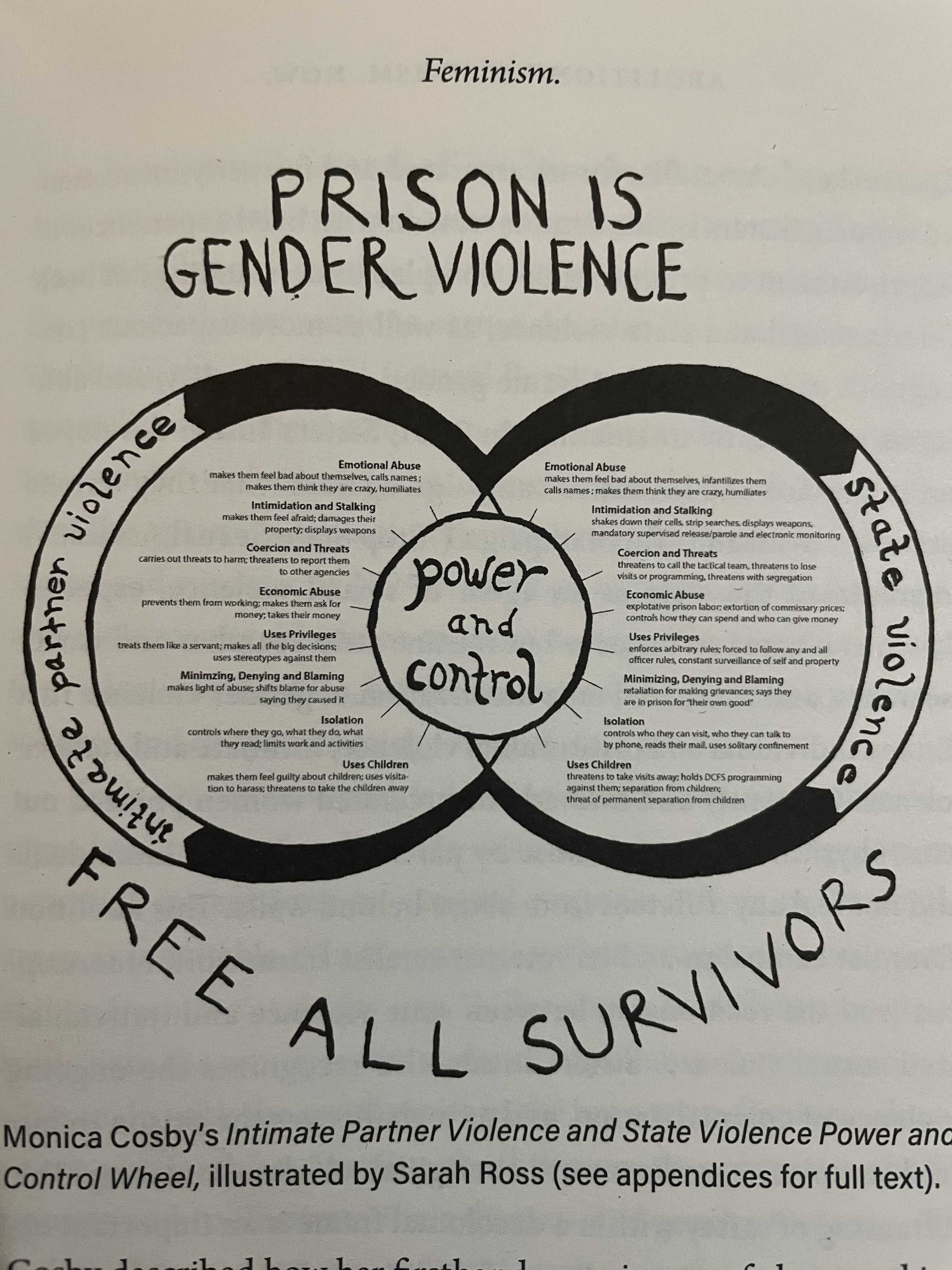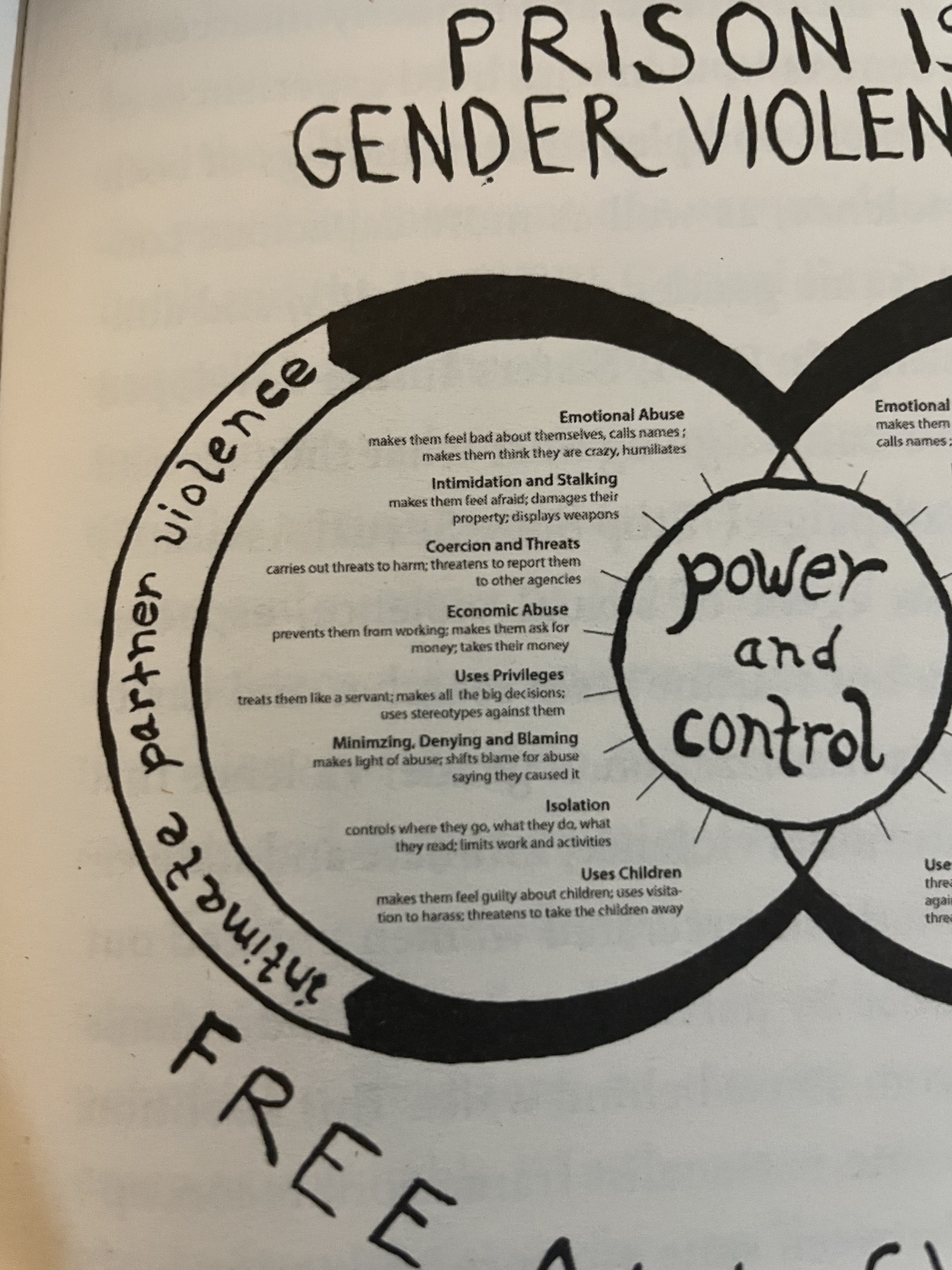ABOLITION.
FEMINISM.
NOW.
FEMINISM.
NOW.
BY ANGELA Y. DAVIS, GINA DENT, ERICA R. MEINERS AND BETH E. RITCHIE
OKHA BOOK REVIEW BY THEOPHINA GABRIEL
c/w: r*pe mention, casual mentions of gender and state violence throughout (non-graphic)
Abolition. Feminism. Now. contains a wonderful burning sense of urgency in its title; especially in light of news cycles which continuously angle the violent murders of women into arguments for increased carceral power. Written by Angela Y. Davis, Gina Dent, Erica R. Meiners and Beth E. Richie Abolition. Feminism. Now’s titular emphasis on the present made me excitedly envision succinct and practical blueprints that could better clarify how abolitionist feminising organising and campaigning might be achieved today. I imagined a breakdown of steps used within previously successful campaigning methods, key summaries of methodology from convention workshops or even theoretical speculative methods previously unexplored.
‘Rather than read this short book and the snapshot of campaigns, organizational formulations, and analysis we offer as a road map – as prescriptive tools for the present and future… we suggest an engagement with the goal of our collective writing: to expand dialogue, practice reflection and more.’
– p. xivI was given the heads up to readjust my expectations after reading the above quote in the preface and within the book I found instead a (beautiful) collection of abolitionist art, an informative timeline of the formations, peaks, achievements, and shortcomings of (mainly) US feminist and abolitionist group histories, definitional maps that explored the meaning and necessary relation between abolition and feminism and detailed explanations and statistics behind abolitionist feminist theory. These were very informative for understanding the motives and mechanics behind abolitionist feminist movements and thought, but I did struggle at times with the circular feeling of the language – a more fitting title might have been Abolition. Feminism: A History. Although I gained clarity on new histories behind abolitionist feminist organising, I was still left a little frustrated by the gap the book left between historical documentation and actually summarising some of the key forms from the various workshops, campaigns and discussions mentioned. This would have been useful for anyone interested in getting involved with abolition feminist organising but doesn’t quite know what current action looks like within movements.
We seem to be at a time where mainstream public consciousness is at a critical point of wavering with disillusionment at the power of the carceral state to ‘protect and serve’ its citizens. The missing piece has always been structural ambiguity. What are the tangible tools we will use to create alternative methods of justice? How will we use them to resolve or even prevent harm at a societal level? There was a strange hesitation from the co-authors here; they conflated the mere suggestion of tools with prescriptivism – I felt this was a sorely missed opportunity to synthesise the legacies of organisational abolitionist feminist work into replicable and tangible starting points for strategy. Tools can be radically malleable; they can become starting points and templates for revision and further imagination – simply defining them as prescriptive from jump felt ironically unimaginative.
We seem to be at a time where mainstream public consciousness is at a critical point of wavering with disillusionment at the power of the carceral state to ‘protect and serve’ its citizens. The missing piece has always been structural ambiguity. What are the tangible tools we will use to create alternative methods of justice? How will we use them to resolve or even prevent harm at a societal level? There was a strange hesitation from the co-authors here; they conflated the mere suggestion of tools with prescriptivism – I felt this was a sorely missed opportunity to synthesise the legacies of organisational abolitionist feminist work into replicable and tangible starting points for strategy. Tools can be radically malleable; they can become starting points and templates for revision and further imagination – simply defining them as prescriptive from jump felt ironically unimaginative.
The main strength of Abolition. Feminism. Now. lies in the depth of its resource lists, its archival re-writing of Black women organisers back into the narrative from erasure and descriptive breakdowns analysing the link between gender and prison violence. I particularly enjoyed the letter from the Santa Cruz Women Against Rape (1977) – which I felt provided some of the praxis I was searching for in the book – and also Monica Crosby’s diagram below which illustrates the way the violence is mirrored within relationships of intimate gender violence and structural carceral violence.



Abolition. Feminism. Now. – p.113
‘…we recognise many people may read this project and want templates, detailed chronologies, and definitions. Indeed, while we might be pressured to desire these at times, we understand the forms of carceral logic that compel us in these ways.’
– p.168me sitting up in bed (colourised) still looking for some
praxis within the narrative (c.2022)
Overall, I would have felt more engaged with the spirit of the title if the co-authors (even in passing) noted clearer templates from their depicted narrative summaries. I also did not agree with their rationalising of this structural desire as ‘carceral’ thinking. However, I was grateful for the detailed historical archiving which provided a glimmer of said templates regardless. I’ve sifted out two below in the belief that clarity regarding examples of radical abolition feminist organising remain as important as encouraging imagination. Hesitancy around tools and definition only strips of us tangible strategic dialogue which equips us with much-needed starting points for unique experimentation for various collective organisational methods.
TWO EXAMPLES OF ABOLITION FEMINISM
-
Black Mamas Bail Out Action Campaign – SONG (2017): ‘…those on the outside raised money for bail, and women on the inside collectively decided who would benefit from the bail campaign. There were women who spent many months behind bars even though their charges were relatively minor, because they and their family members outside had few or no resources. From their perspective, a bail set at $500 might as well have been $500,000. The organising and collective decision-making among the imprisoned women was especially important because those who got out on bail committed to raising funds for the bail campaign after their release.’ – p.31
- Santa Cruz Women’s Prison Project – (1970s): ‘worked to create a vibrant community of people inside and outside prisons along the West Coast by hosting discussions on “alternatives to prison,” circulating newsletters with shared updates and analysis, creating support networks for people inside and after release, and generating sustained campaigns to halt construction of new jails and prisons.’ – p.36
